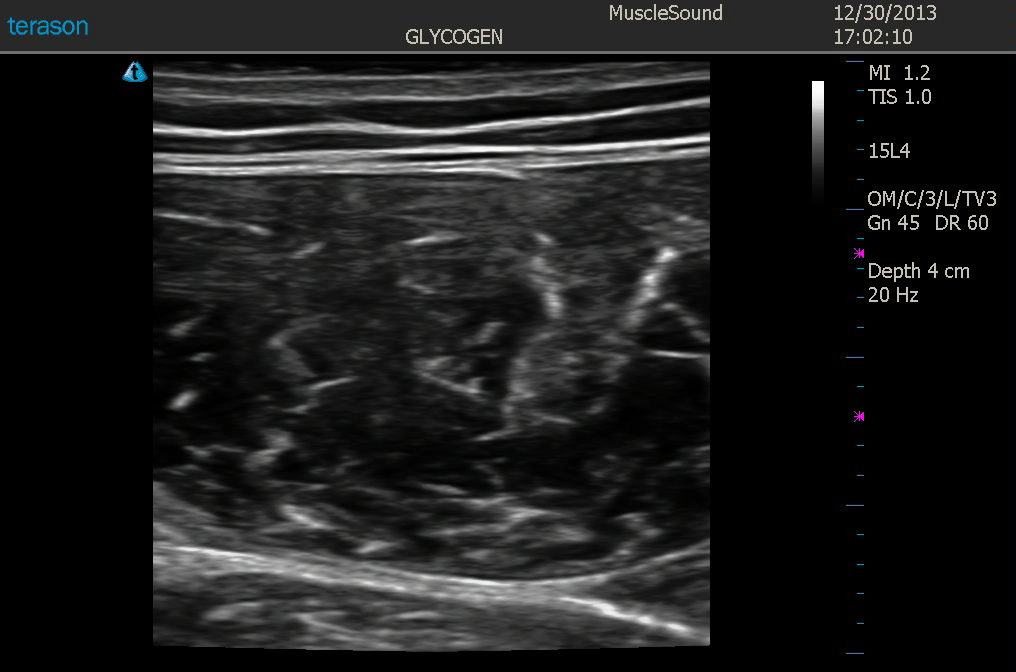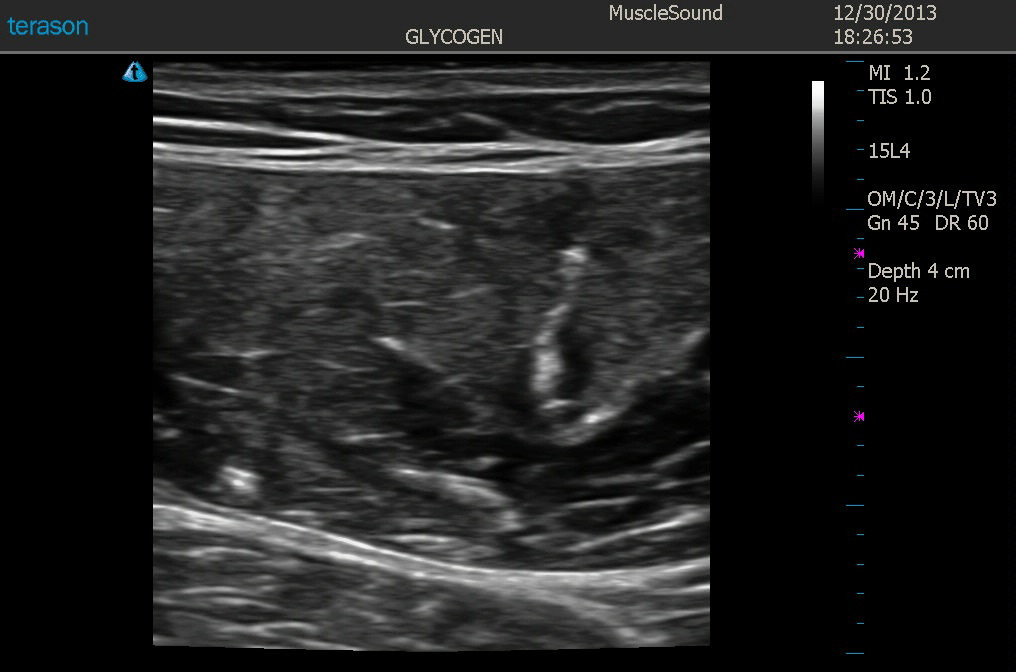Until recently, muscle glycogen content levels could only be measured through muscle biopsy or Nuclear Magnetic Resonance (NMR or MRI). Therefore, the regular assessment of glycogen content has been impractical for field use and during training by teams and athletes due to the cost, difficult application and invasive nature of both measurement modalities. As such, it has been difficult to identify suboptimal glycogen content levels in athletes using these existing measurement methods.
Now, MuscleSound provides a practical, accurate and non-invasive method that allows teams and athletes to regularly measure muscle glycogen content in real time in the field using portable, high-frequency ultrasound technology and patented cloud-based software.
The patented MuscleSound methodology is based upon measuring the water content associated with glycogen in the muscle. Each glucose molecule associated with muscle glycogen retains 3 – 4 molecules of water. Ultrasound “sees” water, thus when a muscle is full of glycogen, the ultrasound image is hypoechoic (dark). When glycogen leaves the muscle, water is lost from the muscle as well, thus exposing muscle fibers to the ultrasound beam and creating a hyperechoic (brighter) image. Within the MuscleSound methodology, the glycogen content measured via ultrasound is quantified using image processing and analysis through segmentation of the region of interest and measurement of the mean signal intensities.

When a muscle is full of glycogen, the ultrasound image is hypoechoic (dark).

When glycogen leaves the muscle, water is lost from the muscle as well, thus exposing muscle fibers to the ultrasound beam and creating a hyperechoic (brighter) image.
This methodology provides muscle-specific data allowing for personalized nutritional recommendations and training requirements, as well as indications of overtraining and possible muscle damage.
